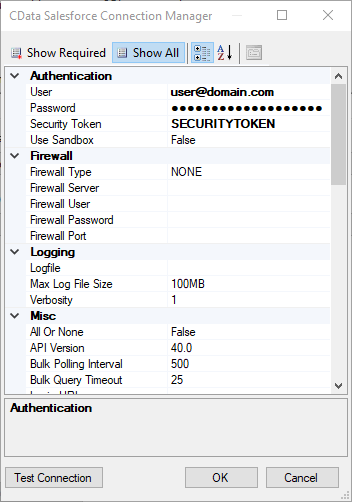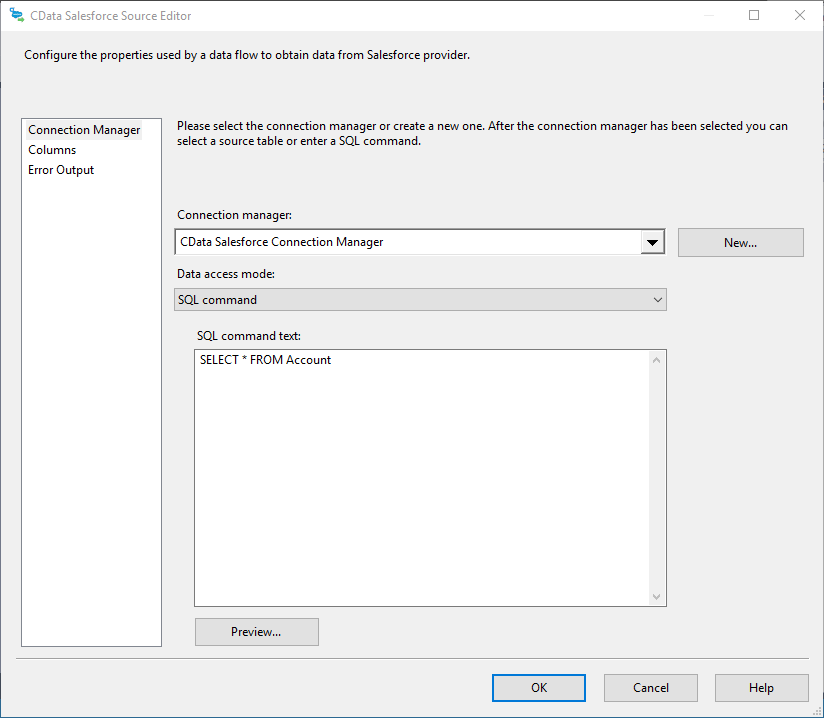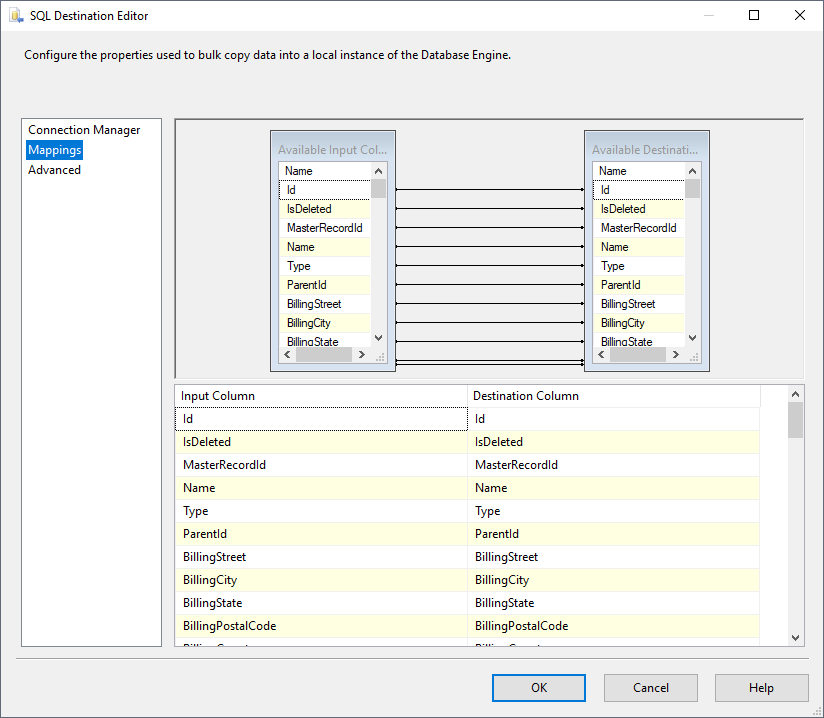Discover how a bimodal integration strategy can address the major data management challenges facing your organization today.
Get the Report →How to Import SAP SuccessFactors Data into SQL Server using SSIS
Easily back up SAP SuccessFactors data to SQL Server using the SSIS components for SAP SuccessFactors.
Using SQL Server as a backup for critical business data provides an essential safety net against loss. Backing up data to SQL Server enables business users to more easily connect that data with features like reporting, analytics, and more.
This example demonstrates how to use the CData SSIS Tasks for SAP SuccessFactors inside of a SQL Server SSIS workflow to transfer SAP SuccessFactors data into a Microsoft SQL Server database.
Add the Components
To get started, add a new SAP SuccessFactors source and SQL Server ADO.NET destination to a new data flow task.

Create a New Connection Manager
Follow the steps below to save SAP SuccessFactors connection properties in a connection manager.
- In the Connection Manager window, right-click and then click New Connection. The Add SSIS Connection Manager dialog is displayed.
- In the Connection Manager type menu, select SAPSuccessFactors. The CData SAP SuccessFactors Connection Manager is displayed.
- Configure connection properties.
You can authenticate to SAP Success Factors using Basic authentication or OAuth with SAML assertion.
Basic Authentication
You must provide values for the following properties to successfully authenticate to SAP Success Factors. Note that the provider will reuse the session opened by SAP Success Factors using cookies. Which means that your credentials will be used only on the first request to open the session. After that, cookies returned from SAP Success Factors will be used for authentication.
- Url: set this to the URL of the server hosting Success Factors. Some of the servers are listed in the SAP support documentation (external link).
- User: set this to the username of your account.
- Password: set this to the password of your account.
- CompanyId: set this to the unique identifier of your company.
OAuth Authentication
You must provide values for the following properties, which will be used to get the access token.
- Url: set this to the URL of the server hosting Success Factors. Some of the servers are listed in the SAP support documentation (external link).
- User: set this to the username of your account.
- CompanyId: set this to the unique identifier of your company.
- OAuthClientId: set this to the API Key that was generated in API Center.
- OAuthClientSecret: the X.509 private key used to sign SAML assertion. The private key can be found in the certificate you downloaded in Registering your OAuth Client Application.
- InitiateOAuth: set this to GETANDREFRESH.
![Configuring a connection (Salesforce is shown).]()
Configure the SAP SuccessFactors Source
Follow the steps below to specify the query to be used to extract SAP SuccessFactors data.
- Double-click the SAP SuccessFactors source to open the source component editor.
- In the Connection Manager menu, select the connection manager previously created.
- Specify the query to use for the data extraction. For example:
SELECT address1, zipCode FROM ExtAddressInfo WHERE city = 'Springfield'![The SQL query to retrieve records. (Salesforce is shown.)]()
- Close the SAP SuccessFactors Source control and connect it to the ADO.NET Destination.
Configure the SQL Server Destination
Follow the steps below to specify the SQL server table to load the SAP SuccessFactors data into.
- Open the ADO.NET Destination and add a New Connection. Enter your server and database information here.
- In the Data access mode menu, select "table or view".
- In the Table Or View menu, select the table or view to populate.
- Configure any properties you wish to on the Mappings screen.
![The mappings from the SSIS source component to SQL Server. (Salesforce is shown.)]()
Run the Project
You can now run the project. After the SSIS Task has finished executing, your database will be populated with SAP SuccessFactors data.










